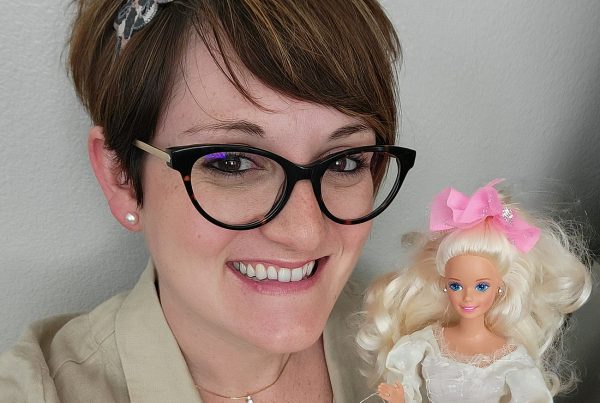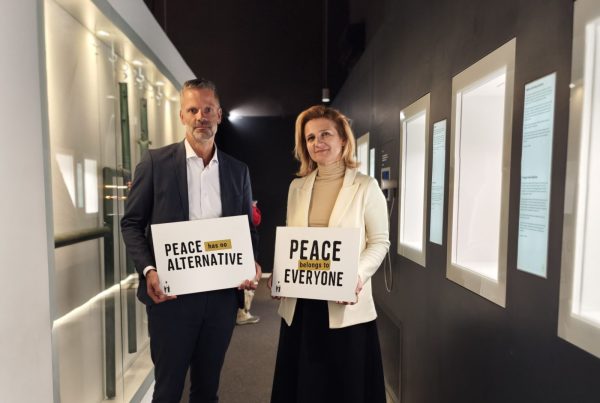For the past two years, the War Childhood Museum has welcomed students from the Braća Radić Secondary School of Economics in Đakovo, Croatia. Their visits were initiated by religious education teacher Nataša Šantić, and some students later returned on their own. How did these visits come about, how does the Museum shape students’ understanding of war, and why is it important to preserve memory? Find out in our conversation with the educator.
Nataša Šantić, a graduate theologian and religious education teacher, has been connected to the War Childhood Museum since 2023, when she participated in the international seminar Children in War. The seminar focused on educational approaches and the use of materials from the collections of the War Childhood Museum and the Anne Frank House.
Empathy and Human Rights in Religious Education
Šantić was drawn to the seminar because she strives to teach her students and younger generations about acceptance, respect for diversity, and fundamental human rights, including the right to life, regardless of nationality, religion, or race.
“The training deepened my understanding of how to engage students in discussions about remembrance, particularly of child victims, and how to inspire them to develop respect, empathy, and a sense of responsibility for building a better and more just world,” she explained.“
Following the seminar, she introduced her students to the Museum’s work and organized visits in October 2023 and November 2024. More than 200 students from her school have since visited the Museum, confronting difficult but essential lessons about childhood in war.
“They felt very sad while reading about these events, but at the same time, they found the experience highly educational and expressed gratitude for having a normal and peaceful childhood,” Šantić emphasized.
The Educational Impact of the Visits
She noted that some students were unaware of the Museum, while others didn’t even know there had been a war in Sarajevo. This visit, therefore, also served an important educational purpose.
“They said the Museum taught them about the long-term consequences of war on education, health, and, most importantly, childhood itself. It made them reflect on the importance of preserving peace and preventing conflicts worldwide.”
Nataša Šantić has personally experienced the trauma of war and, as a child from an occupied area, deeply related to the museum’s artifacts and stories. “I, too, spent some time in an occupied area, not knowing whether my family was alive or dead. These experiences never truly fade, which is why it’s important to pass them on so that younger generations can understand how precious peace is,” she emphasized.
Why Initiatives Like This Matter
She sees the Museum as a vital tool in educating future generations to build a more just society. According to her, initiatives like the War Childhood Museum carry profound significance, as they help preserve the memories of experiences that shaped the lives of many during the war.
“Such initiatives create space for understanding the past through personal stories, making traumatic experiences visible and accessible for future generations to learn from. For individuals, they can provide support in the healing process, as well as education and awareness,” says Šantić, adding that the Museum also offers those who have lived through war a sense that their memories and emotions are acknowledged and respected.
“Through personal stories, often told through words and objects, initiatives like this serve as reminders of human resilience and strength. They help us recognize the universality of human experience. At the end of the day, no matter who we are, we are all human,” she concluded.
We thank Nataša Šantić for her dedication and engagement with the War Childhood Museum. We look forward to continuing our shared efforts in educating young people and promoting peace through stories that must never be forgotten.





